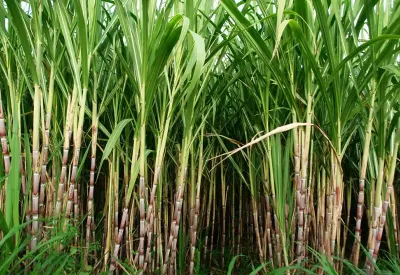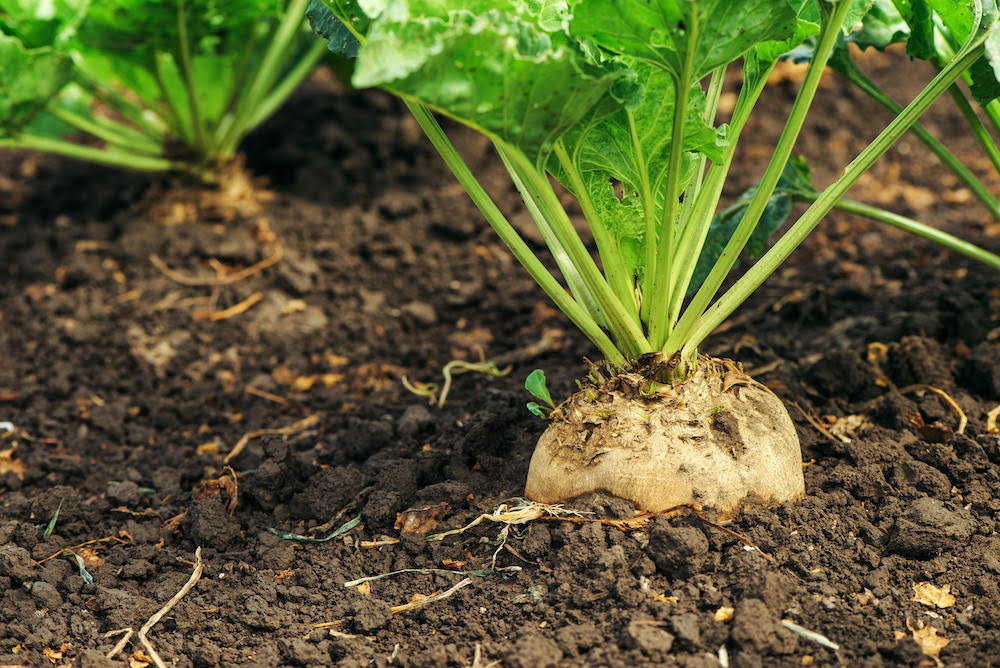Sugar beet vs sugar cane: How regional climate affects farming strategies
All You Required to Find Out About Sugar Beet Vs Sugar Cane: Insights Into Their Duties in the Cane Sugar Sector
The sugar sector counts greatly on both sugar beet and sugar cane, each offering special benefits and difficulties. Comprehending their growing techniques, geographic distribution, and nutritional impacts exposes significant differences. As customer choices shift, the industry faces pushing needs for sustainability and technology. Checking out these facets can give much deeper insights into the future of sugar and their duties in the worldwide market. What developments exist ahead for these important plants?
Overview of Sugar Beet and Sugar Cane
Sugar beet and sugar cane are 2 main resources of sucrose, each with special characteristics and farming techniques. Sugar beet, an origin vegetable, grows in warm environments and is often expanded in areas with cooler temperatures. It has a high sugar content, generally about 16 to 20 percent, which is extracted with a procedure of slicing and diffusion. In contrast, sugar cane is a tropical yard that thrives in cozy, humid environments. Its stalks can contain 10 to 15 percent sucrose, and the removal process normally involves squashing the stalks to launch the juice.Both plants play significant duties in the global sugar sector, with sugar beet primarily grown in Europe and North America, while sugar cane is primarily grown in nations like Brazil, India, and China. Sugar beet vs sugar cane. This geographical circulation mirrors the various climatic needs and agricultural methods matched to each plant, affecting their respective contributions to sugar production worldwide
Farming Approaches and Growing Problems
The cultivation techniques and expanding conditions for sugar beets and sugar cane differ substantially due to their distinctive dirt and climate needs. Sugar beets thrive in cooler climates with well-drained, productive dirts, while sugar cane favors warmer temperature levels and can tolerate poorer soils. Furthermore, the harvesting methods for both crops differ, showing their one-of-a-kind expanding techniques and environmental adaptations.
Dirt Needs Contrast
While both sugar beet and sugar cane are important sources of sugar, their dirt demands show distinctive choices that affect cultivation techniques and expanding problems. Sugar beetroots grow in well-drained, loamy soils rich in raw material, with a pH series of 6.0 to 8.0. This sort of soil supports their deep taproots, allowing vitamins and mineral absorption. Alternatively, sugar cane favors fertile, sandy loam or clay dirts that keep wetness, ideally with a pH between 6.0 and 7.5. The root system of sugar cane is much more considerable, calling for soil that can support its development in an extra water-retentive environment. These differing dirt demands require tailored farming techniques to enhance yields for each crop, highlighting the relevance of soil administration in their cultivation.
Environment Flexibility Differences

Harvesting Strategies Summary
Collecting techniques for sugar beet and sugar cane differ considerably as a result of their unique cultivation techniques and growing conditions. Sugar beet is usually collected mechanically utilizing specialized tools that uproots the plants and divides the roots from the foliage. This procedure is generally performed in cooler months to stop wasting. In comparison, sugar cane harvesting typically includes manual labor or mechanical cutters, where stalks are cut short. This method is performed during the completely dry season to decrease the wetness content, which can affect sugar return. Additionally, the timing of the harvest is essential, as both crops require to be harvested when they get to peak sugar concentration for effective processing.
Geographical Circulation and Production Data
Although both sugar beet and sugar cane serve as crucial resources of sucrose, their geographical distribution and manufacturing statistics reveal noteworthy differences. Sugar cane primarily flourishes in exotic and subtropical environments, with significant manufacturing locations consisting of Brazil, India, China, and Thailand. In comparison, sugar beet is primarily grown in warm areas, with leading producers located in Europe, the United States, and Russia.According to current data, global sugar cane production considerably goes beyond that of sugar beet. In 2021, sugar cane represented approximately 79% of total sugar manufacturing worldwide, while sugar beet added around 21%. Brazil remains the here are the findings world's largest sugar producer, generally from sugar cane, creating over 38 million statistics tons annually. The United States is one of the leading sugar beet manufacturers, producing about 5 million statistics tons each year. These statistics underscore the essential duty each plant plays in the global sugar industry

Nutritional Distinctions and Health And Wellness Impacts
The dietary make-up of sugar beet and sugar cane differs significantly, influencing their respective health impacts. Sugar beet tends to include greater levels of specific nutrients, while sugar cane supplies a various collection of nutrients. Understanding these differences is important for assessing their impacts on health and wellness and dietary options.
Nutrient Structure Comparison
When comparing the nutrient composition of sugar beet and sugar cane, significant differences arise that can affect health and wellness results. Sugar beetroots are understood to provide a greater concentration of essential nutrients, consisting of vitamins B6 and C, potassium, and magnesium. On the other hand, sugar cane tends to have reduced levels of these nutrients, largely working as a carb source. Sugar beetroots likewise contain nutritional fiber, which internet is useful for digestive health and wellness, while sugar cane lacks this component. Furthermore, the presence of anti-oxidants in sugar beets adds to potential health and wellness benefits, unlike sugar cane, which is mostly made up of sucrose. These differences highlight the varying dietary accounts of both resources, which might influence customer options and nutritional considerations.

Health And Wellness Effects Introduction
While both sugar beet and sugar cane are extensively used for sugar production, their distinct nutritional profiles result in differing health and wellness results. Sugar beet typically contains higher levels of vitamins and minerals, such as potassium and magnesium, adding to better overall nutritional worth. Alternatively, sugar cane's juice is rich in antioxidants, which might offer extra health and wellness benefits.However, both resources primarily produce sucrose, which, when consumed in excess, positions dangers such as obesity, diabetes mellitus, and heart illness. The glycemic index of sugar cane is typically a little less than that of sugar beet, potentially making it a better option for blood glucose monitoring. Inevitably, moderation is important for both types to alleviate damaging health impacts related to high sugar consumption.
Ecological Considerations in Sugar Production
Sugar manufacturing from both sugar beet and sugar cane provides economic advantages, it likewise raises substantial ecological concerns. The farming of these crops frequently entails substantial land use, which can bring about habitat devastation and loss of biodiversity. Additionally, using fertilizers and chemicals in sugar farming contributes to dirt degradation and water air pollution, impacting neighborhood ecosystems.The high water usage needed for browse around these guys irrigation, specifically in sugar cane production, aggravates water shortage concerns in some regions. Furthermore, deforestation for increasing sugar cane ranches has actually been linked to boosted greenhouse gas emissions, additionally adding to climate change.Sustainable farming methods, such as plant rotation and natural farming, are vital to alleviate these environmental effects. Market stakeholders are significantly identifying the need for liable growing approaches to ensure the lasting practicality of sugar manufacturing while lessening harm to the world.
Economic Significance in the Global Market
The ecological challenges related to sugar manufacturing underscore the demand to examine its economic relevance in the global market. Sugar beet and sugar cane are crucial to the agricultural economic climate, adding significantly to the incomes of millions worldwide. In 2022, the international sugar market was valued at approximately $50 billion, with sugar cane accountancy for the majority of production. Nations such as Brazil, India, and China are leading manufacturers, influencing worldwide supply chains and prices frameworks. The competition in between sugar beet and sugar cane likewise affects regional economic climates, as farmers select crops based on market needs and weather problems. Furthermore, the sugar market supports ancillary sectors, including food processing and biofuel production, improving its total economic impact. As customer preferences shift in the direction of much healthier options, the economic characteristics of sugar manufacturing may develop, necessitating ongoing evaluation of its market relevance in an altering global landscape.
Future Fads and Technologies in Sugar Production
As the international demand for sugar continues to advance, technologies in sugar manufacturing are emerging to deal with sustainability and efficiency obstacles. One significant fad is the enhanced fostering of precision farming modern technologies, which make it possible for farmers to enhance yields while lessening environmental influences. In addition, developments in reproducing methods, such as CRISPR genetics modifying, are being discovered to develop sugar plants with enhanced resistance to parasites and diseases, therefore decreasing the need for chemical inputs.Moreover, the integration of renewable energy resources in sugar handling plants is obtaining traction, helping to reduced carbon impacts. The fad towards bioprocessing is likewise considerable, as companies want to transform by-products into value-added products like biofuels and bioplastics. Customer preferences are changing towards all-natural sweeteners, motivating research into alternate resources like stevia and monk fruit, which might improve the landscape of the sugar industry in the coming years.
Often Asked Concerns
Just How Do Sugar Beet and Sugar Cane Preference In A Different Way?
Sugar beet and sugar cane display distinctive taste accounts. Sugar beet often tends to have a somewhat natural sweet taste, while sugar cane offers a more robust, syrupy sweet taste, contributing to their special cooking applications and choices amongst customers.
Can Sugar Beet and Sugar Cane Be Utilized Reciprocally in Recipes?
Sugar beet and sugar cane can be utilized mutually in dishes, though their flavors and sweetness levels may vary slightly. Adjustments could be required to achieve the desired taste and appearance in cooking applications.
What Are the Byproducts of Sugar Beet and Sugar Cane Handling?
The spin-offs of sugar beet and sugar cane processing include molasses, bagasse, and pulp (Sugar beet vs sugar cane). These products are made use of in animal feed, biofuel manufacturing, and numerous industrial applications, improving sustainability and lowering waste in the sugar industry
Are There Any Kind Of Different Utilizes for Sugar Beet Besides Sugar Production?
The alternative uses for sugar beet extend past sugar manufacturing. They include animals feed, biofuel manufacturing, and the extraction of plant-based chemicals, showcasing sugar beet's flexibility within agricultural and commercial applications.
Exactly How Does Climate Adjustment Affect Sugar Beet and Sugar Cane Crops?
Environment change impacts sugar beet and sugar cane crops by altering temperature level and precipitation patterns. Increased warmth anxiety, drought, and changing pest populaces can decrease returns, challenging farmers to adjust their techniques for lasting production.